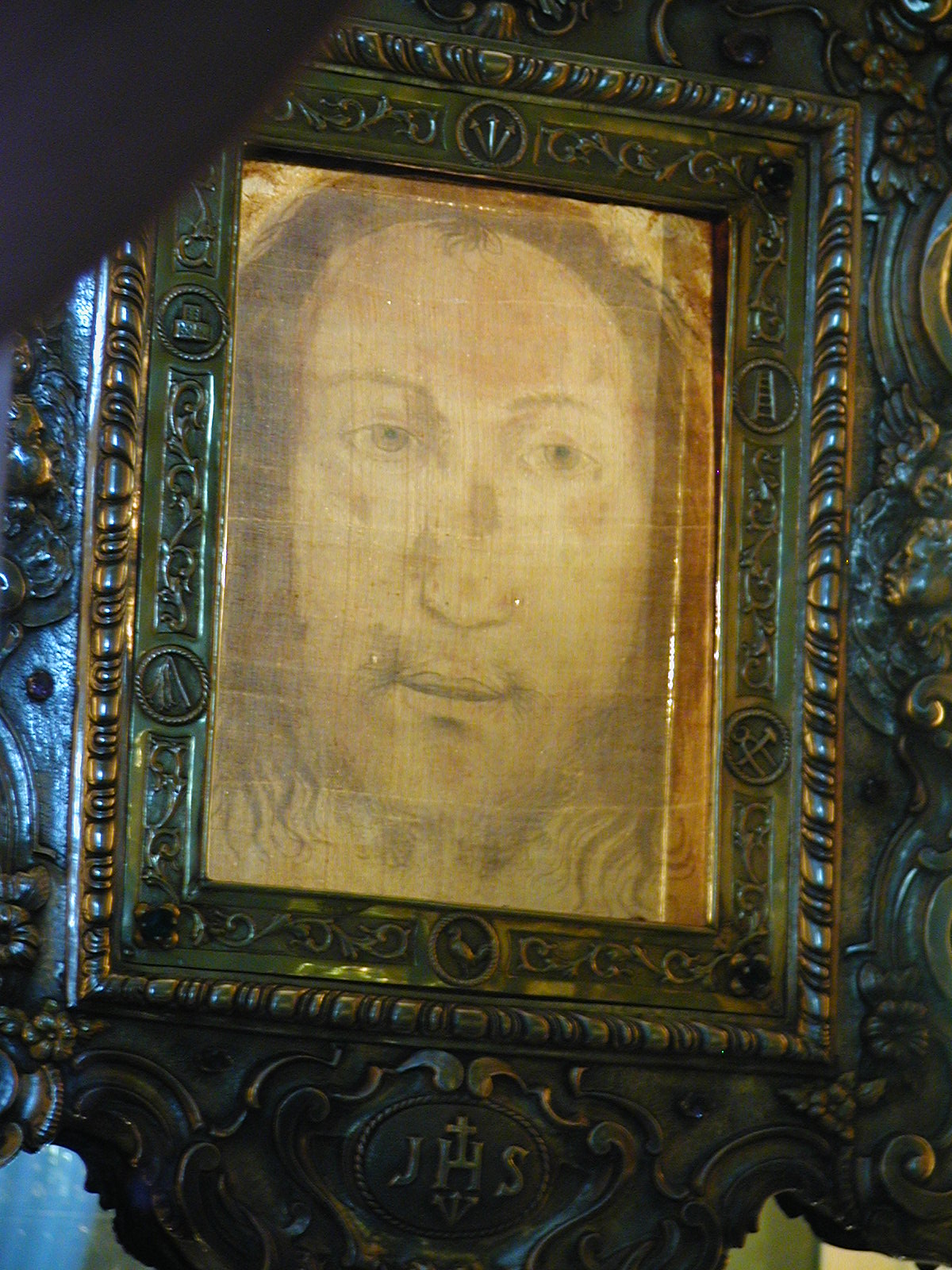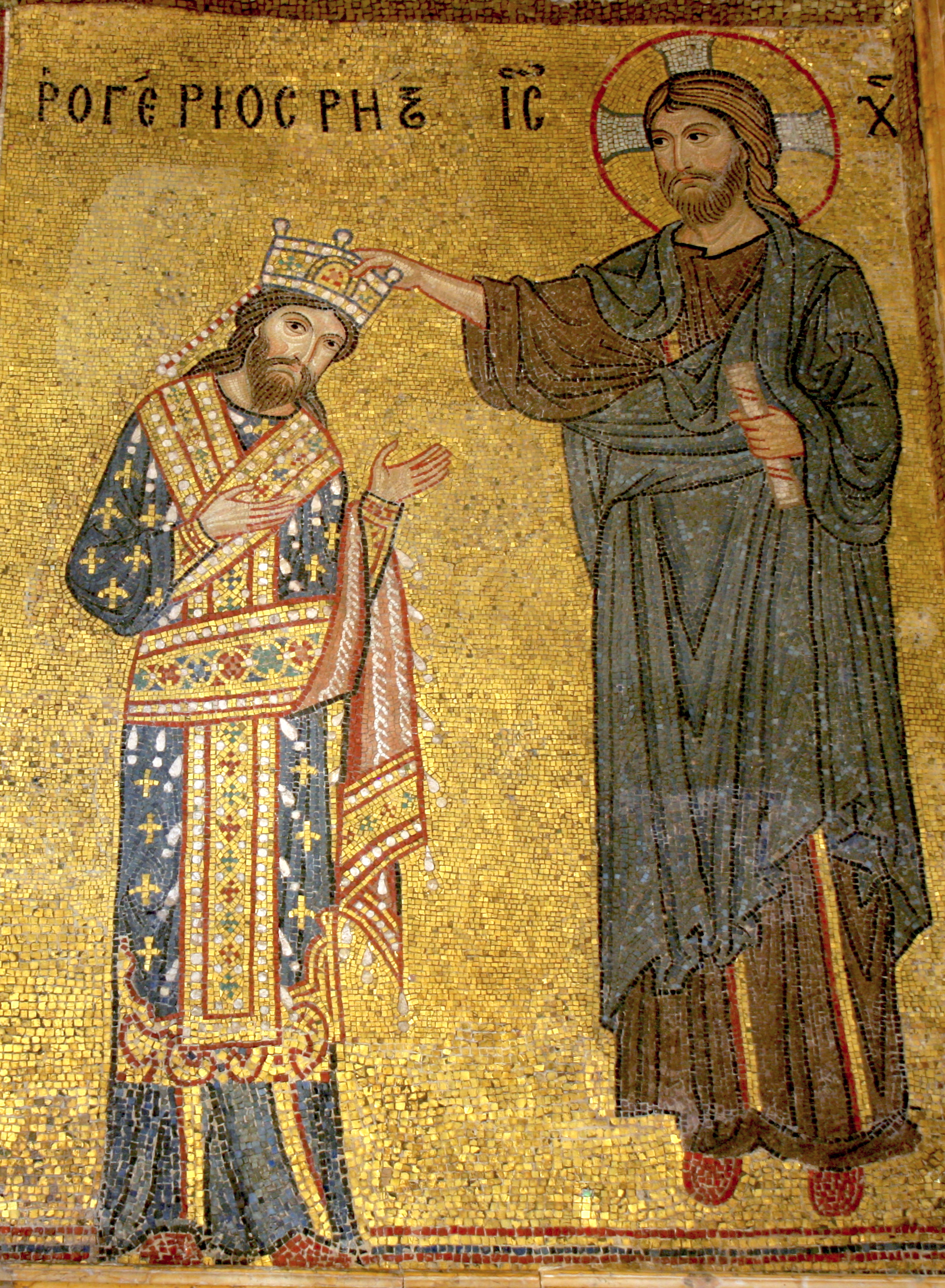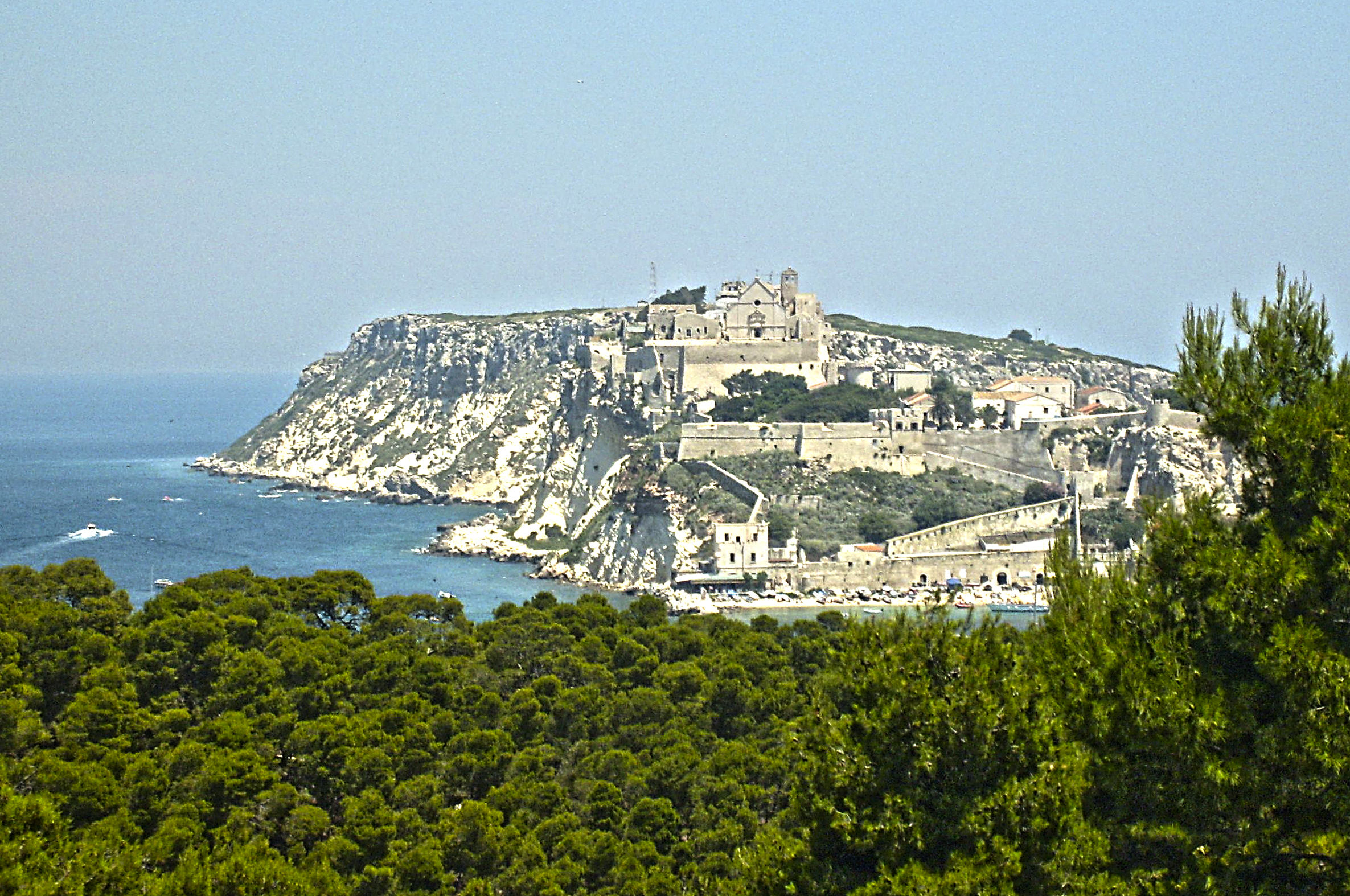|
Peter Of Lesina
Peter (fl. 1056–92) was the Norman count of Lesina in the Duchy of Apulia. He was a son of Walter of Civitate and brother of Amicus of Giovinazzo. Unlike several members of his family, including his brother, he remained loyal to Duke Robert Guiscard throughout the latter's life. In December 1081, Peter and Count Robert I of Loritello witnessed the renunciation by Abbot Desiderius (the future Pope Victor III) of the claims of the Abbey of Montecassino over the Abbey of Santa Maria a Mare on Tremiti. On Duke Robert's death in 1085, Peter recognised Roger Borsa as his successor and in August 1086 accompanied him on his visit to Sicily, which was then in the process of being conquered by the Normans from its Muslim rulers. He attended the ducal court again in 1092, witnessing a charter of Duke Roger, but the remoteness of Lesina in northern Apulia seems generally to have kept him out of the civil strife of the kingdom, into which his brother Amicus was frequently drawn. Peter ... [...More Info...] [...Related Items...] OR: [Wikipedia] [Google] [Baidu] |
Normans
The Normans (Norman language, Norman: ''Normaunds''; french: Normands; la, Nortmanni/Normanni) were a population arising in the medieval Duchy of Normandy from the intermingling between Norsemen, Norse Viking settlers and indigenous West Francia, West Franks and Gallo-Roman culture, Gallo-Romans. The term is also used to denote emigrants from the duchy who conquered other territories such as England and Sicily. The Norse settlements in West Francia followed a series of raids on the French northern coast mainly from Denmark, although some also sailed from Norway and Sweden. These settlements were finally legitimized when Rollo, a Scandinavian Viking leader, agreed to swear fealty to Charles the Simple, King Charles III of West Francia following the Siege of Chartres (911), siege of Chartres in 911. The intermingling in Normandy produced an Ethnic group, ethnic and cultural "Norman" identity in the first half of the 10th century, an identity which continued to evolve over the ce ... [...More Info...] [...Related Items...] OR: [Wikipedia] [Google] [Baidu] |
Tremiti Islands
The Isole Tremiti, also called "Isole Diomedee" (Diomedes' Islands, from Greek ''Diomèdee'', Διομήδεες) are an archipelago in the Adriatic Sea, north of the Gargano Peninsula. They constitute a ''"comune"'' of Italy's Province of Foggia and form part of the Gargano national park. The archipelago is composed of 5 islands: San Domino, San Nicola, Capraia, Cretaccio and Pianosa. The islands were used for the internment of political prisoners during Benito Mussolini's Fascist regime. But it was also the prison of Julia the Younger, the granddaughter of Augustus and, in 780, the prison of Paul the Deacon at the behest of Charlemagne. The islands are now an important tourist attraction because of the clear waters surrounding them. Up to 100,000 visitors come to the islands in the summer season. Ferry services from the mainland operate from Termoli, Vieste, Rodi Garganico and Capoiale, while Alidaunia offers flights from San Domino Heliport to Foggia and Vieste. Toponym Th ... [...More Info...] [...Related Items...] OR: [Wikipedia] [Google] [Baidu] |
Manoppello
Manoppello ( Abruzzese: ') is a ''comune'' in Abruzzo, in the province of Pescara, south-eastern Italy. It is famous for having a church which contains an image on a thin byssus veil, a sudarium, known as the Holy Face of Manoppello and which has been reputed to be identical to the Veil of Veronica. Other sights include is the Romanesque abbey of Santa Maria Arabona. Twin towns * Casarano, Italy * Charleroi, Belgium Belgium, ; french: Belgique ; german: Belgien officially the Kingdom of Belgium, is a country in Northwestern Europe. The country is bordered by the Netherlands to the north, Germany to the east, Luxembourg to the southeast, France to th ... References External links Inside Abruzzo - Insider tips uncoveredVolto Santo di Manoppello Veil, Polish websiteonline audio visual featuring texts by sudarium expert Sr. Blandina Paschalis Schlömer ''et al.'' The Rediscovered Face - 1first of four installments of an audiovisual presentation relating the holy image ... [...More Info...] [...Related Items...] OR: [Wikipedia] [Google] [Baidu] |
Richard Of Manoppello
Richard is a male given name. It originates, via Old French, from Old Frankish and is a compound of the words descending from Proto-Germanic ''*rīk-'' 'ruler, leader, king' and ''*hardu-'' 'strong, brave, hardy', and it therefore means 'strong in rule'. Nicknames include "Richie", "Dick", "Dickon", " Dickie", " Rich", " Rick", " Rico", "Ricky", and more. Richard is a common English, German and French male name. It's also used in many more languages, particularly Germanic, such as Norwegian, Danish, Swedish, Icelandic, and Dutch, as well as other languages including Irish, Scottish, Welsh and Finnish. Richard is cognate with variants of the name in other European languages, such as the Swedish "Rickard", the Catalan "Ricard" and the Italian "Riccardo", among others (see comprehensive variant list below). People named Richard Multiple people with the same name * Richard Andersen (other) * Richard Anderson (other) * Richard Cartwright (other) ... [...More Info...] [...Related Items...] OR: [Wikipedia] [Google] [Baidu] |
Emirate Of Sicily
The Emirate of Sicily ( ar, إِمَارَة صِقِلِّيَة, ʾImārat Ṣiqilliya) was an Islamic kingdom that ruled the island of Sicily from 831 to 1091. Its capital was Palermo (Arabic: ''Balarm''), which during this period became a major cultural and political center of the Muslim world. Sicily was part of the Byzantine Empire when Muslim forces from Ifriqiya began launching raids in 652. Through a prolonged series of conflicts from 827 to 902, they gradually conquered the entirety of Sicily, with only the stronghold of Rometta, in the far northeast, holding out until 965. Under Muslim rule, the island became increasingly prosperous and cosmopolitan. Trade and agriculture flourished, and Palermo became one of the largest and wealthiest cities in Europe. Sicily became multiconfessional and multilingual, developing a distinct Arab-Byzantine culture that combined elements of its Islamic Arab and Berber migrants with those of the local Greek-Byzantine and Jewish com ... [...More Info...] [...Related Items...] OR: [Wikipedia] [Google] [Baidu] |
Norman Conquest Of Southern Italy
The Norman conquest of southern Italy lasted from 999 to 1139, involving many battles and independent conquerors. In 1130, the territories in southern Italy united as the Kingdom of Sicily, which included the island of Sicily, the southern third of the Italian Peninsula (except Benevento, which was briefly held twice), the archipelago of Malta, and parts of North Africa. Itinerant Norman forces arrived in southern Italy as mercenaries in the service of Lombard and Byzantine factions, communicating news swiftly back home about opportunities in the Mediterranean. These groups gathered in several places, establishing fiefdoms and states of their own, uniting and elevating their status to ''de facto'' independence within 50 years of their arrival. Unlike the Norman Conquest of England (1066), which took a few years after one decisive battle, the conquest of southern Italy was the product of decades and a number of battles, few decisive. Many territories were conquered independ ... [...More Info...] [...Related Items...] OR: [Wikipedia] [Google] [Baidu] |
County Of Sicily
The County of Sicily, also known as County of Sicily and Calabria, was a Italo-Normans, Norman state comprising the islands of Sicily and Malta and part of Calabria from 1071 until 1130. The county began to form during the Norman conquest of southern Italy, Christian reconquest of Sicily (1061–91) from the Emirate of Sicily, Muslim Emirate, established by conquest in 965. The county is thus a transitional period in the history of Sicily. After the Muslims had been defeated and either forced out or incorporated into the Norman military, a further period of transition took place for the county and the Sicilians. History The County of Sicily was created by Robert Guiscard in 1071 for his younger brother Roger Bosso. Guiscard himself had received the title Duke of Sicily (''dux Siciliae'') in 1059 from Pope Nicholas II as encouragement to conquer it from the Muslims. In 1061 the first permanent Norman conquest (Messina) was made and in 1071, after the fall of Palermo, the capi ... [...More Info...] [...Related Items...] OR: [Wikipedia] [Google] [Baidu] |
Roger Borsa
Roger Borsa (1060/1061 – 22 February 1111) was the Norman Duke of Apulia and Calabria and effective ruler of southern Italy from 1085 until his death. Life Roger was the son of Robert Guiscard and Sikelgaita, a Lombard noblewoman. His ambitious mother arranged for Roger to succeed his father in place of Robert Guiscard's eldest son by another wife, Bohemund of Taranto. His nickname, Borsa, which means "purse", came from "his early-ingrained habit of counting and recounting his money." In 1073, Sikelgaita had Roger proclaimed heir after Guiscard fell ill at Trani. Roger's cousin Abelard was the only baron to dissent from the election of Roger, claiming that he was the rightful heir to the duchy. Roger accompanied his father on a campaign to Greece in 1084. He was still in Greece when his father died on 17 July 1085 in Kefalonia. While Bohemond was supposed to inherit the Greek possessions and Roger the Italian ones, it was Bohemund who was in Italy (Salerno) and Roger in Gree ... [...More Info...] [...Related Items...] OR: [Wikipedia] [Google] [Baidu] |
Abbey Of Santa Maria A Mare
The Abbey of Santa Maria a Mare was a monastery on the island of San Nicola in the Tremiti Islands off the northern coast of the Gargano Peninsula in Italy from the 9th century until 1782. According to Cardinal Leo Marsicanus, the 11th-century historian of the Abbey of Monte Cassino, a monk of Monte Cassino named Monecaus served as provost in a "cell" (''cella'') dedicated to Saint James in the Tremiti Islands during the abbacy of Bertharius (856–83). Leo reports that in his day many charters from the time of Monecaus were still in the archives of Monte Cassino. For some reason, Leo later erased this information from his chronicle. None of the charters he mentions survive. In 883, a band of Saracens sacked Monte Cassino and the monks went into exile for over half a century. This period must have severed relations between it and its provostries, including Tremiti.Herbert Bloch, ''Monte Cassino in the Middle Ages'', Vol. 1 (Harvard University Press, 1986), pp. 689–94. For a list ... [...More Info...] [...Related Items...] OR: [Wikipedia] [Google] [Baidu] |
Lesina, Apulia
Lesina is a town and ''comune'', former bishopric and Latin Catholic titular see on the northern side of Monte Gargano in the province of Foggia, in the Apulia region of southeast Italy. Description Lesina lies on the northern side of Gargano and on the shores of the lake with the same name. It is a maritime village known for the production of (female) eels. The site, populated since the Neolithic era, is a narrow strip of land covered with sandy dunes and little woods, separating the lake from the sea, which creeps into its waters through two canals (Aquarotta and Schiapparo). Devio hill, only high, divides the two lakes, Lesina and Varano, and some findings of the Neolithic era have been found there. Lesina, built after the immigration of Dalmatian fishers, and known to Romans as Alexina, was often afflicted by earthquakes and sea flooding, and its population was decimated by malaria. The hot waters of Caldoli stream, not very far and near San Nazario Sanctuary, testify ... [...More Info...] [...Related Items...] OR: [Wikipedia] [Google] [Baidu] |
Abbey Of Montecassino
An abbey is a type of monastery used by members of a religious order under the governance of an abbot or abbess. Abbeys provide a complex of buildings and land for religious activities, work, and housing of Christian monks and nuns. The concept of the abbey has developed over many centuries from the early monastic ways of religious men and women where they would live isolated from the lay community about them. Religious life in an abbey may be monastic. An abbey may be the home of an enclosed religious order or may be open to visitors. The layout of the church and associated buildings of an abbey often follows a set plan determined by the founding religious order. Abbeys are often self-sufficient while using any abundance of produce or skill to provide care to the poor and needy, refuge to the persecuted, or education to the young. Some abbeys offer accommodation to people who are seeking spiritual retreat. There are many famous abbeys across the Mediterranean Basin and Europe ... [...More Info...] [...Related Items...] OR: [Wikipedia] [Google] [Baidu] |
Pope Victor III
Pope Victor III ( 1026 – 16 September 1087), was the head of the Catholic Church and ruler of the Papal States from 24 May 1086 to his death. He was the successor of Pope Gregory VII, yet his pontificate is far less notable than his time as Desiderius, the great abbot of Montecassino. His failing health was the factor that made him so reluctant to accept his pontifical election and his health was so poor that he fell to illness during his coronation. The only literary work of his that remains is his "Dialogues" on the miracles performed by Benedict of Nursia and other saints at Montecassino. Pope Leo XIII beatified him on 23 July 1887. Family Daufer was born in 1026. He obtained permission to enter the monastery of S. Sophia at Benevento. Abbacy The life at S. Sophia was not strict enough for the young monk, who betook himself first to the island monastery of Tremite San Nicolo in the Adriatic and in 1053 to the hermits at Majella in the Abruzzi. About this time h ... [...More Info...] [...Related Items...] OR: [Wikipedia] [Google] [Baidu] |

.png)




%2C_Cartuja_del_Paular-Museo_del_Prado.jpg)